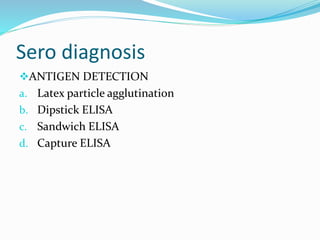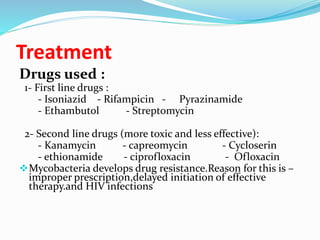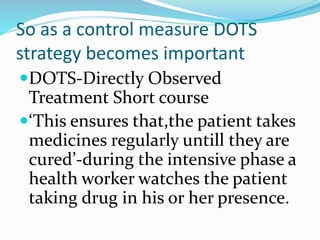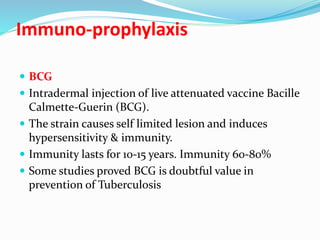Tuberculosis (TB) is a bacterial disease caused by Mycobacterium tuberculosis, with TB Day raising public awareness of its causes, prevention, and cure. The document provides historical, biological, and clinical insights into TB, including its modes of transmission, risk factors, and various diagnostic methods along with treatments available, emphasizing the importance of timely identification and therapy. It also discusses the role of the immune response in TB pathology and the effectiveness of vaccination with BCG.
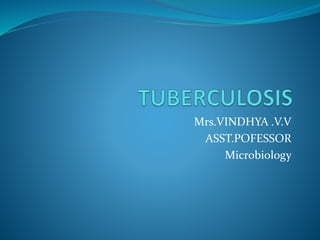
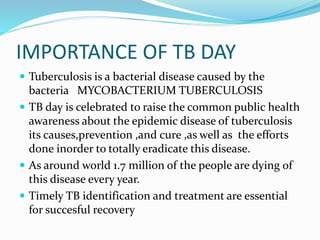
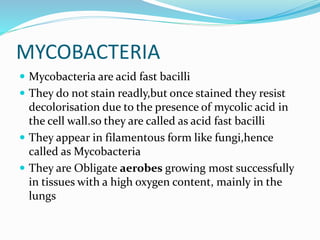


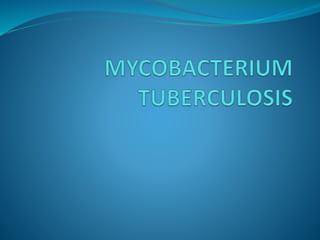
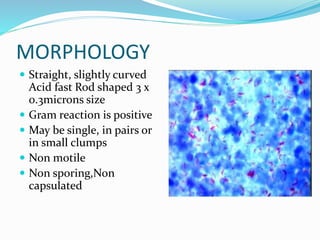

![Nature of Media Used
Helps the growth needs
Solid Medium is
commonly used.
SOLID MEDIA
1. Lowenstein Jensen’s
medium,Petrangini,Do
rset[contain egg]
2. Tarshis media [blood]
3. Loeffler[serum]
4. Pawlosky[potato]
Most commonly used
is
Lowenstein Jensen’s
Medium
Contain coagulated egg
Mineral salt solution
Asparagine's
Malachite
green[selective agent]](https://image.slidesharecdn.com/tuberculosis1-190624082448/85/Tuberculosis-9-320.jpg)
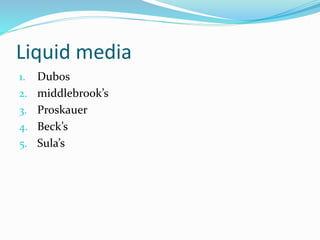


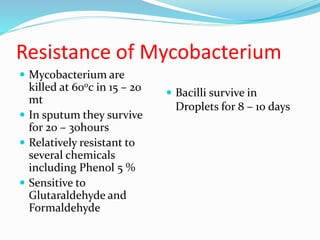


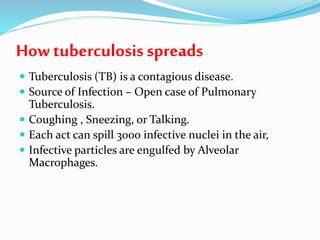
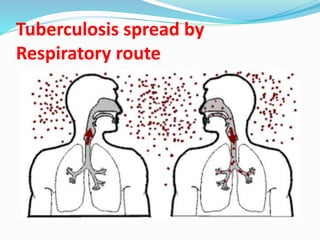
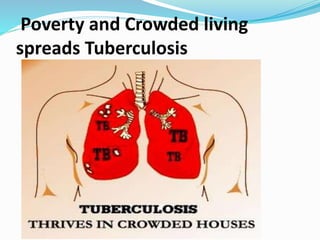




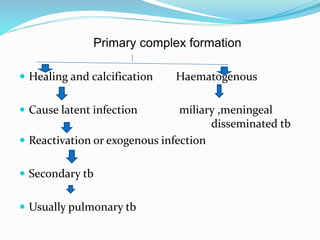
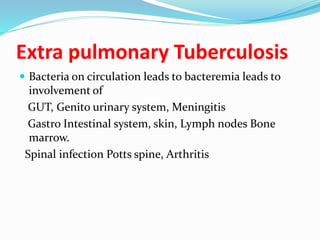
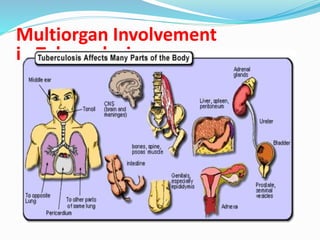




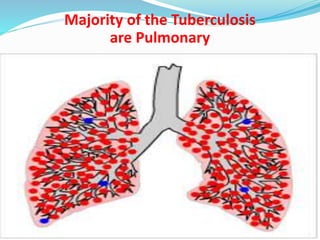

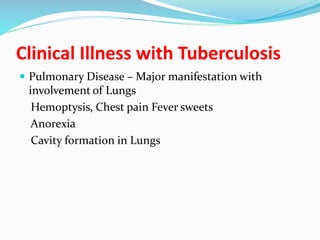

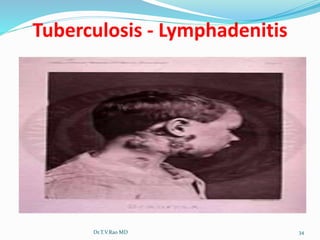


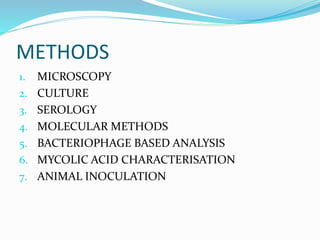
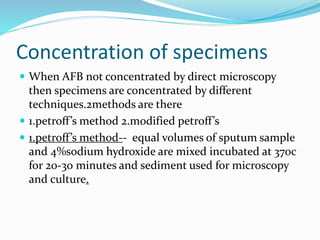
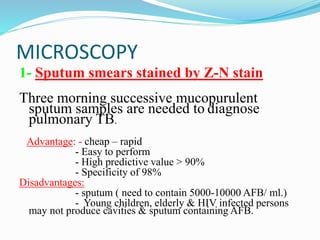
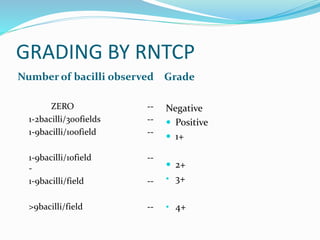

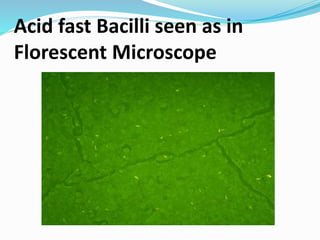
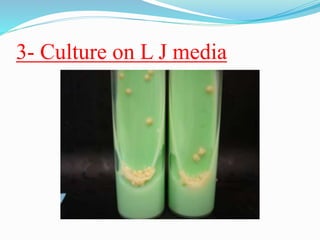
![Tuberculin Test[mantoux test]
It is typeIV hypersensitivity reaction
Purified protein derivative is inoculated intradermally
on forearm
Site observed after 72hrs for appearance of area of
erythema and induration
About 10mm indicate positive test
Below 5mm indicate negative
Between 5&9 mm indicates doubtful test](https://image.slidesharecdn.com/tuberculosis1-190624082448/85/Tuberculosis-44-320.jpg)

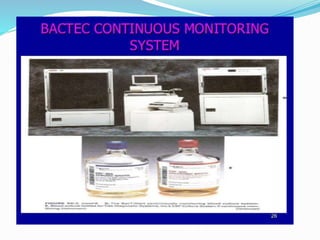
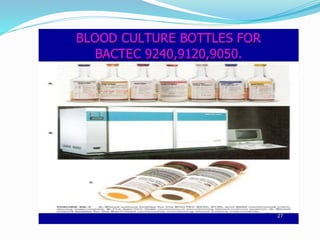

![Other rapid identification methods
are
MGIT—Mycobacteria Growth Indicator Tube
BACTEC 9000MB
BACTEC MGIT 960
ESP CULTURE SYSTEM 2
SEPTICHECK AFB SYSTEM[Manual]](https://image.slidesharecdn.com/tuberculosis1-190624082448/85/Tuberculosis-49-320.jpg)


